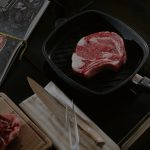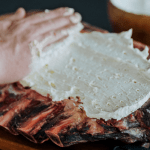Everything You Need to Know About Dry Aged Fish in the DRY AGER™
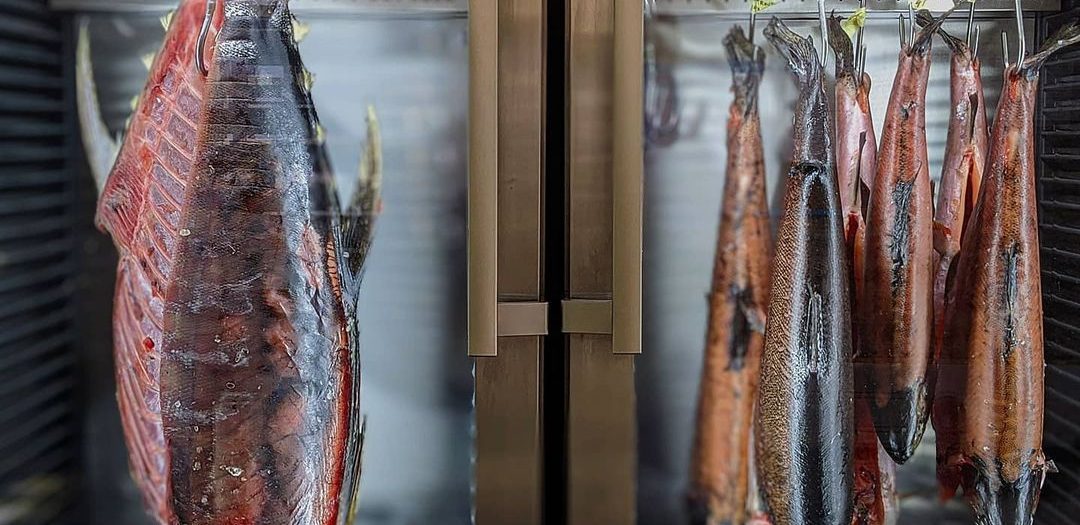
At first glance, dry aged fish seems like a bit of an oxymoron.
Why would it be a good idea to dry age one of the world’s freshest and most delicate foods? Isn’t the freshness of fish one of the most important measures of its quality?
While fresh fish is usually considered more desirable by the general public, the truth is that even marine proteins benefit from dry aging.
The process of dry aging fish elevates texture, taste, and aroma. It creates a more desirable, rich final product, with deeper, bolder flavours than can ever be wrung from fresh fish.
Slaughtering method:
If you think dry aging fish is surprising, the process prior to aging the fish will really ‘hook’ your attention.
First, all entrails and blood from the abdominal cavity must be removed, along with the gills. To do this correctly, the Ike jime technique for slaughtering fish is highly recommended for fish that is to be aged.
What is the Ike jime technique?
Originating in Japan, this technique is now a prerequisite for thousands of top chefs around the world. Ike jime employs either a firm hit on the head or spiking of the brain to kill the fish instantaneously. Not only is this a relatively humane method, it also maximises the quality and shelf life of the meat.
After a precise cut into the brain is made, this incision will start the bleed-out, while a follow-up cut from the head to tail through the spinal cord will stop all the fish’s reflexes. These steps will make the fillet muscles even more tender.
Once the cuts are made, the fish can be placed on ice to bleed out. Once completed, the meat is in the perfect condition for dry aging.
By following this process, you ensure that the fish ages correctly. Furthermore, using proper preparation methods prevents the fish becoming contaminated, and by the end of the aging process, inedible.
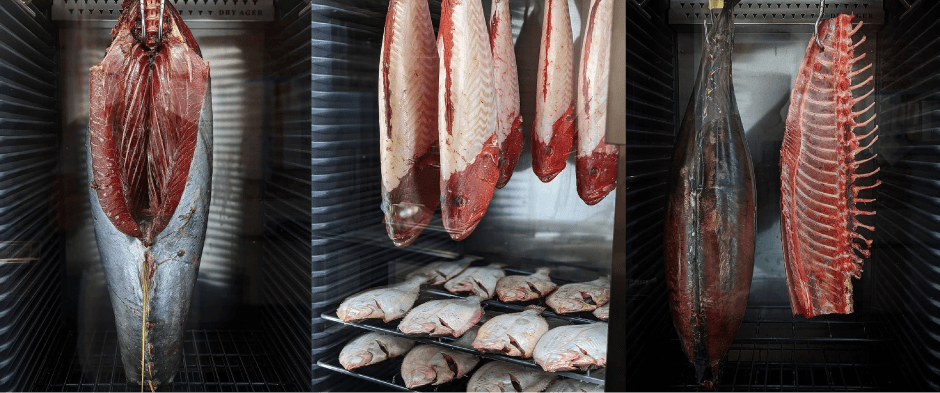
Into the DRY AGER™…
Now the fish has been prepped, it is ready for the DRY AGER™. Simply hang your fish in the cabinet and choose the correct aging setting.
The are several key points to note throughout the dry aging process.
First, the surface of each fillet of fish must always be kept dry. If the fish is hanging, no surfaces should touch each other. Finally, ensure that the cabinet is not overloaded, as this will reduce the chance of icing up issues occurring.
Follow each of these simple rules, and you can be assured of a great final product once your fish is aged.
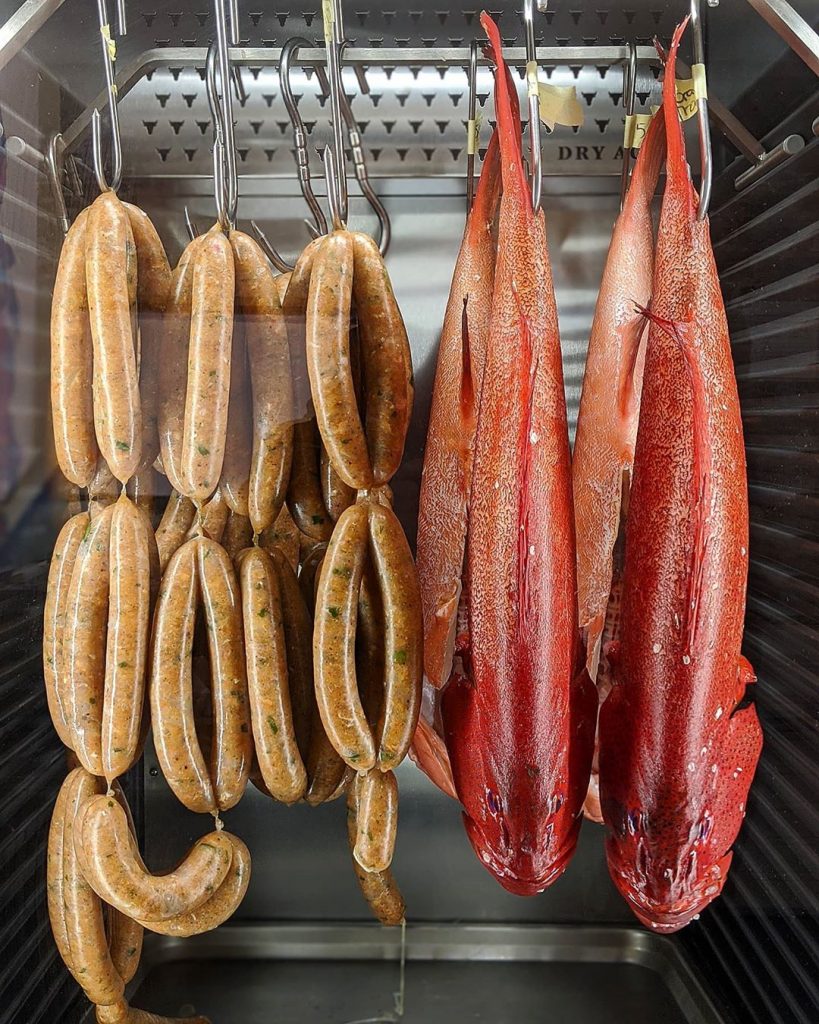
Recommended fish to age:
Where do you begin to choose the best fish to dry age? With so many fish in the sea, you’re absolutely spoilt for choice, with each variety creating a unique final product.
We recommend Kingfish, King Salmon, Barramundi, Snapper, Branzino or Jon Dory.
Dry aging scallops as an option for the more adventurous foodies. If they are thoroughly cleaned prior, they have been reported to develop a buttery aroma after only 3-5 days of dry aging.
As a general rule of thumb – the more fat that a fish contains, the longer it can then be dry aged for. Lean fish should only be in the DRY AGER™ for around 2-4 days, however a fatty king salmon for example, can be aged for 2 weeks and beyond.
Contrary to popular opinion, regardless of whether fish is dry aged for weeks or only days, it will make a clear difference to the protein. Dry-aged fish quickly develops a pleasantly meaty texture and more vibrant taste.
As dry aged fish is becoming a staple menu item, the DRY AGER™ Smart Ager has now made it possible to age fish at the press of a button. Simply select the setting for fish, position the fish within the cabinet, close the door, and walk away.
Unthinkable not so long ago, aging fish with consistent results has now become possible. Transform fish into a sensational gourmet experience, with the DRY AGER™.

